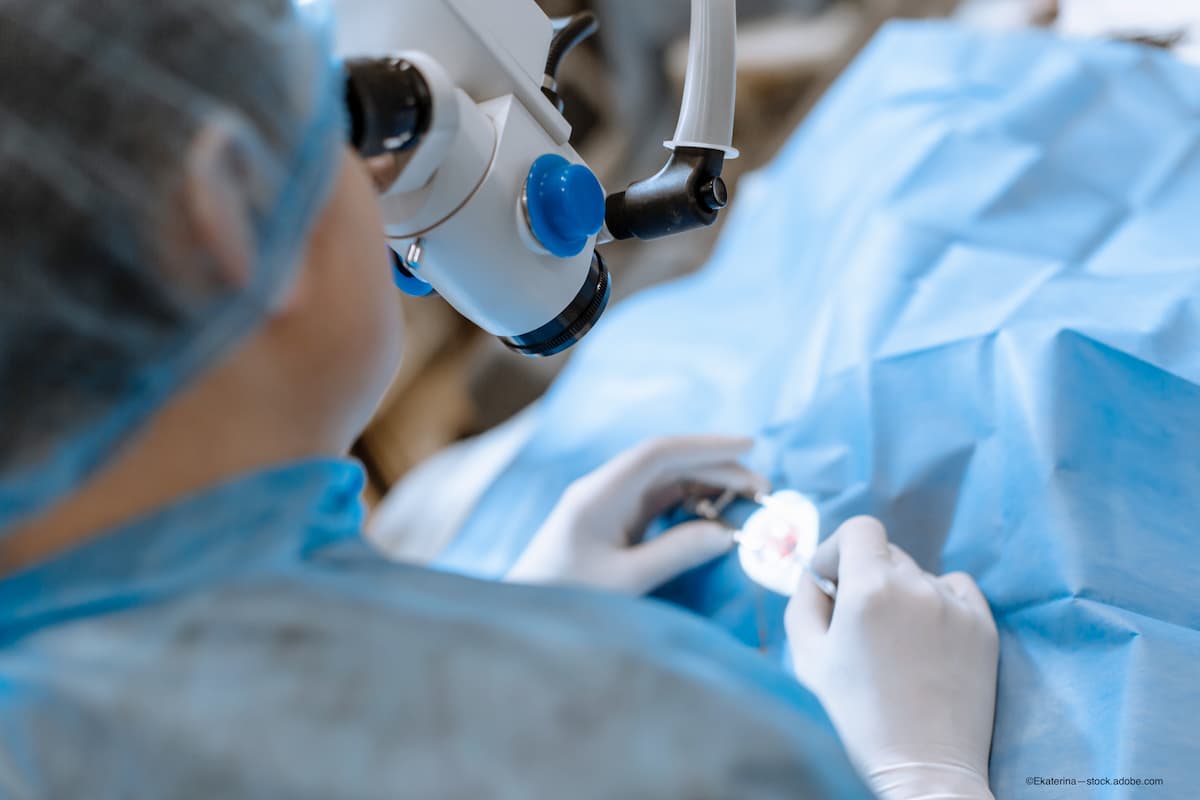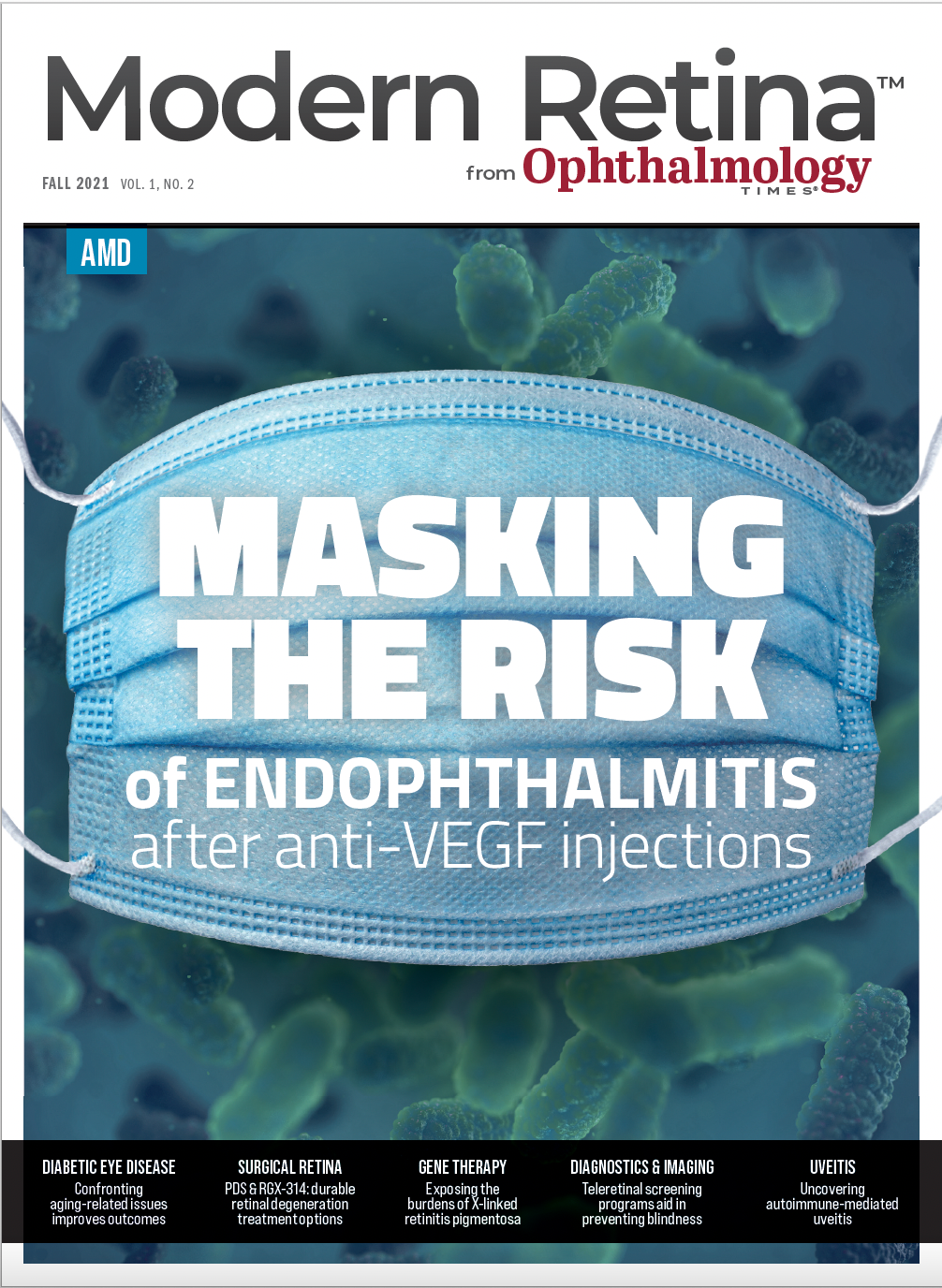Two new retinal surgical procedures for wet AMD: PDS and RGX-314
Options facilitate increased durability for patients with retinal degeneration.

Anti-VEGF therapies have been highly beneficial for patients with macular degenerations, but these patients require frequent treatment to maintain visual acuity, underscoring the need for sustained-release products, according to Lejla Vajzovic, MD, an associate professor of ophthalmology at Duke University Eye Center in Durham, North Carolina.
Vajzovic discussed the 2 surgical options that facilitate increased durability for patients with retinal degenerations for exudative age-related macular degeneration (AMD).
Port delivery system
The Port Delivery System (PDS) (Susvimo; Genentech), a recently FDA-approved drug delivery system, is a permanent refillable intraocular implant that is positioned at the pars plana. The device contains a customized formulation of ranibizumab (Lucentis; Genentech) that can be refilled in the office.
The phase 3 Archway study of patients with wet AMD showed a favorable benefit-risk profile for the PDS. The change in best-corrected visual acuity at weeks 36 and 40 was comparable to that achieved with monthly ranibizumab injections. This approach was able to maintain the visual acuity with a reduced treatment burden.
Vajzovic emphasized the importance of strict adherence to the surgical steps during PDS implantation: peritomy, implant preparation, scleral dissection, pars plana laser ablation and incision, implant insertion, and conjunctival and Tenon’s capsule closure.
“Control of hemostasis is critical at all steps to ensure optimal visualization and minimize the risk of postoperative vitreous hemorrhage,” she said.
Precise handling of the conjunctiva and Tenon’s capsule and anchoring both to the limbus during closure are crucial to optical outcomes, Vajzovic pointed out. Proper handling ultimately results in decreased risks of exposure and infection. Scleral dissection followed by laser ablation of the pars plana reduces the chances of intraocular bleeding.
The office refill procedure necessitates precise perpendicular targeting using a needle that both injects new drug and excretes the fluid that fills the implant.
Vajzovic provided 4 key points about PDS insertion:
- The sclera is incised layer by layer to expose the pars plana, followed by pars plana laser ablation incision. The incision size is maintained at 3.5 mm to ensure the secure fit of the implant and pars plana hemostasis.
- The conjunctiva and Tenon’s capsule are manipulated with care and anchored to the limbal sclera using a slight overapproximation, which is critical for the implant to stay covered.
- Control of hemostasis is critical at all stages of the implantation to minimize vitreous hemorrhages.
- During the refill/exchange procedure, the surgeon stands on the contralateral side of the study eye, using a perpendicular approach and precise targeting.
The ranibizumab PDS implant received FDA approval in October 2021 following positive phase 3 results.
RGX-314
RGX-314 is a novel adeno-associated virus vector used to deliver an anti-VEGF drug that has shown favorable results in phase 1/2a neovascular AMD studies. The study tested 5 doses administered to patients who previously required frequent injections. The subretinal dosing to date has been completed in 42 subjects in dose-escalating cohorts. The patients were followed up to 2 years.
This procedure involves a vitrectomy followed by subretinal injection of the device with subsequent bleb formation. The patients generally required only a subconjunctival steroid injection.
Vajzovic related the case of an 86-year-old patient randomized to the highest tested dose who did not require further injections after the injection and experienced a small, stable visual improvement.
The interim conclusions drawn from the results were that RGX-314 was well tolerated by all patients and that the treatment provided a long-term, durable treatment effect seen with the 3 highest doses. The patients in the 2 highest-dose cohorts have been followed for more than 1.5 years with stable to improved vision and reductions in the treatment burden. Those in cohort 3 who were followed for more than 3 years had the same results. The pivotal trial, ATMOSPHERE, is now enrolling patients.
RGX-314 is also being evaluated for suprachoroidal use in a phase 2 neovascular AMD study, and the interim data are expected to be released the third quarter of 2021. A phase 2 trial, ALTITUDE, for treatment of diabetic retinopathy is now enrolling patients, and the initial data release is expected this year.
--
Lejla Vajzovic, MD
E: Lejla.Vajzovic@duke.edu
This article is adapted from Vajzovic’s presentation at the Women in Ophthalmology 2021 Summer Symposium. Vajzovic is a consultant to RegenXBio Inc and Roche/Genentech.
Related Content: Retinal Surgery | Ophthalmology | AMD

Newsletter
Keep your retina practice on the forefront—subscribe for expert analysis and emerging trends in retinal disease management.